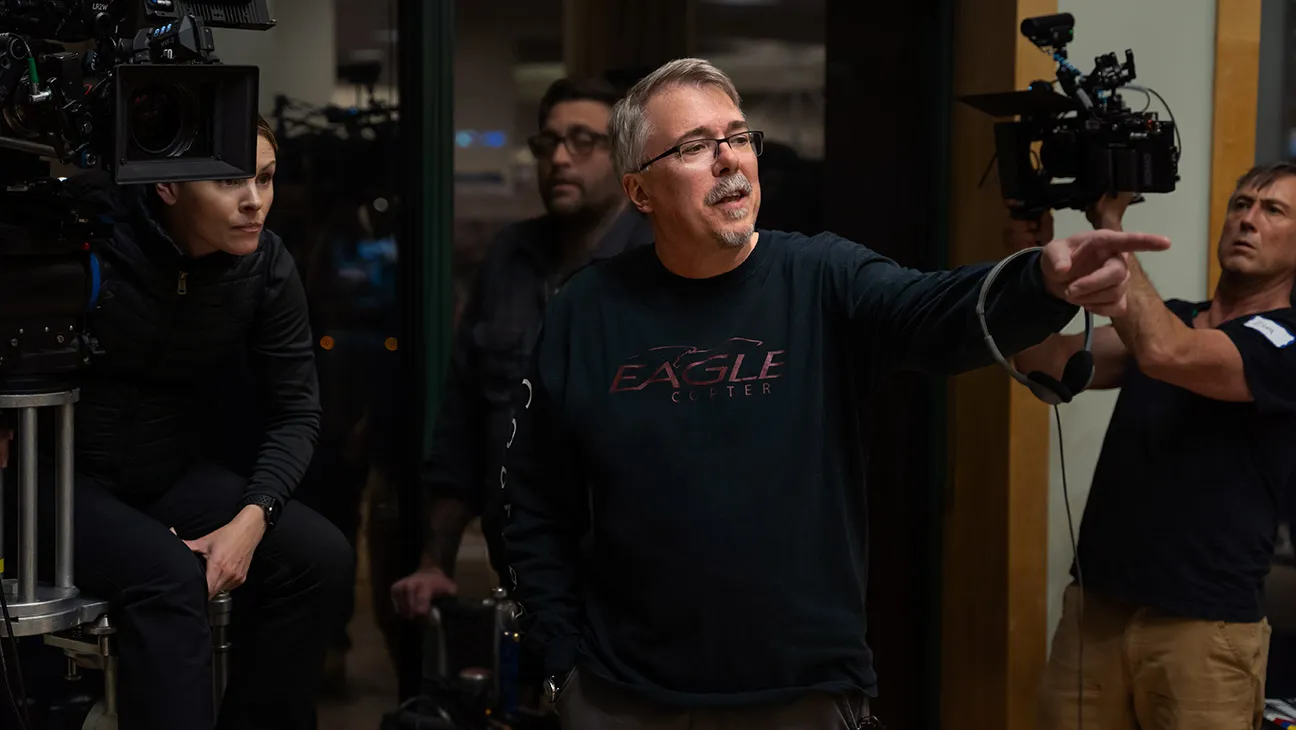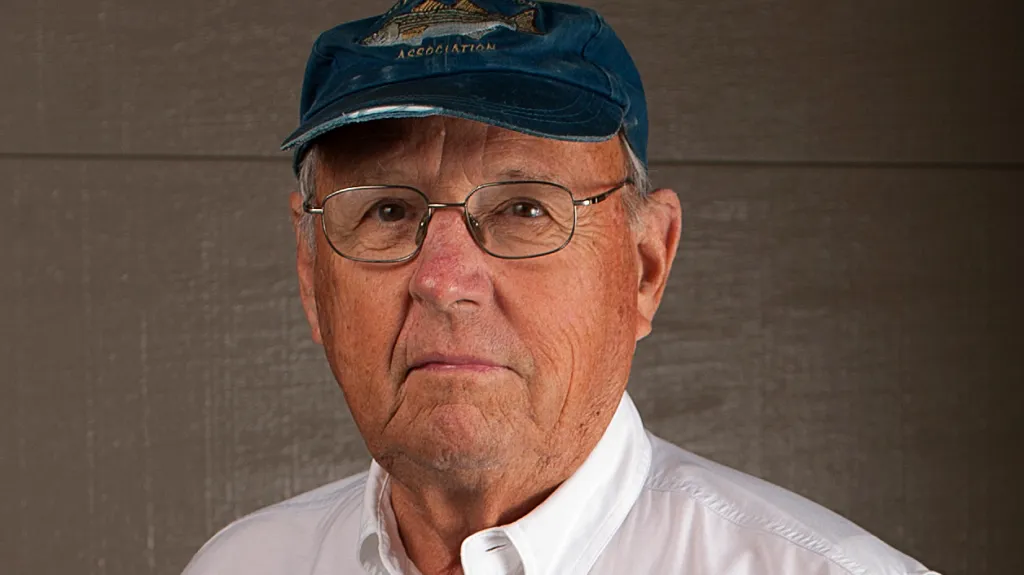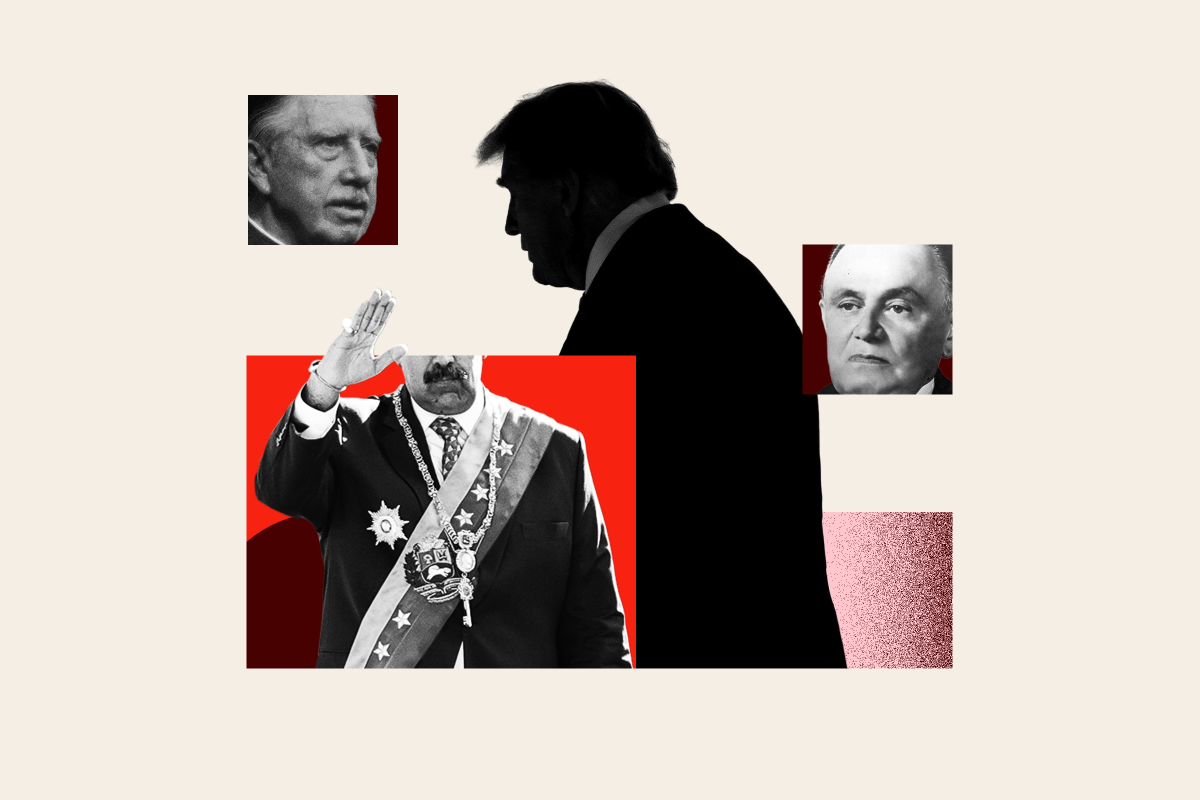Copyright The Hollywood Reporter

Vince Gilligan knew it was time for a palate cleanser. It turns out that plotting the criminal ambitions of Walter White (Bryan Cranston), Jesse Pinkman (Aaron Paul) and Saul Goodman (Bob Odenkirk) for 17 years can take its toll. That’s not to say that Gilligan isn’t proud of his life’s work that includes the 16-time-Emmy-winning Breaking Bad, its prequel-sequel series Better Call Saul and sequel movie, El Camino, but it became increasingly evident to him that he needed to shift his focus to a lead character who isn’t preoccupied with ill-gotten gains. The Virginia native also wanted to prove to himself that he could tackle a completely blank page again after relying on Breaking Bad as a creative springboard for nearly two decades. “As much as I love Walter White and as proud as I am of Breaking Bad — and as much as I know that it’ll be the first sentence in my obituary — at a certain point, you’re like, ‘God, it’d be nice to write a hero again, someone who’s trying to do the right thing,’” Gilligan tells The Hollywood Reporter. The hero and the premise began to emerge during the early days of Better Call Saul. Around 2016, Gilligan imagined a basis for a story in which peace and solidarity suddenly swept the globe. An extension of that same idea also had him pondering a scenario where everyone was suddenly nice to him. However, in retrospect, Gilligan now realizes he’d already been living that experience through fame and his loyal crew, many of whom have been around since the dawn of Breaking Bad. Their eagerness to satisfy his trademark meticulousness has an identifiable influence on what would become the highly secretive Pluribus. The genre-bending project was so buttoned up that Gilligan didn’t even tell his wife about it for a lengthy period of time. As for who should play the protagonist of his now 9-episode Apple TV series, Gilligan again found inspiration through Saul’s earliest seasons. Rhea Seehorn, as Kim Wexler, was turning heads day in and day out with her performance, so much so that Gilligan and his co-creator Peter Gould pivoted midstream from a show about a fraternal feud to a show about a doomed romance between Seehorn’s Wexler and Odenkirk’s Jimmy McGill, who would one day become Walter White’s consigliere, Saul Goodman. Seehorn eventually garnered two Emmy nominations for her work, cementing her as the latest example of Gilligan’s knack for creating household names out of established working actors or journeyman types. So she became his muse for Pluribus until it was finally time to share his intentions with her during the final days of Saul. Seehorn quickly accepted the role of Carol Sturka, a misanthropic, creatively dissatisfied romance author behind the best-selling Winds of Wycaro book series. Whether it’s her latest book tour or the circumstances that follow a world-changing event that results in widespread harmony, it’s easy to read the series as commentary on Gilligan’s own celebrity. There’s always someone around the corner who’s eager to please you, but being so recognizable can become incredibly isolating as well. Viewers will undoubtedly have many more interpretations of the series, be it a rebuke of AI, which Gilligan refers to as a “plagiarism machine,” or a deep dive into the underlying cost of political unity. (In an upcoming interview with THR, Seehorn insists there was no topical agenda.) Gilligan may have wanted to write a hero again, but Carol’s brand of heroism couldn’t be more unconventional. First of all, her opposition is as congenial as it gets, and her treatment of them is abusive at times, so the character dynamics are by no means black and white. Regardless, Carol is still taking on the tall order of remedying the global affliction for the sake of all the people she once took for granted. “I like writing heroes again. Carol Sturka is a hero. She’s imperfect. She can be a bit of a noodge or a curmudgeon or what have you, but we root for her,” Gilligan says. “She wants to do the right thing, and she wants to save the world. And that’s refreshing.” Carol lives in an upscale corner of Albuquerque, and while her cul-de-sac does bear a passing resemblance to the Schraders’ neck of the woods on Breaking Bad, Gilligan and his crew built their residential neighborhood from the ground up, brick by brick. This became a necessity due to the first season’s variety of special effects, but it also served as a response to one of the very few downsides to Gilligan’s dream run since Breaking Bad first debuted on AMC in January 2008. His Breaking Bad universe, sometimes regarded as the Heisen-verse or the Gilli-verse, has led to a bustling tourism market in the Albuquerque area, as fans in the social media age want to retrace the footsteps of Walter White, Mike Ehrmantraut (Jonathan Banks), Gus Fring (Giancarlo Esposito), etc. And while the majority of tourists have been respectful of the locals, the home that stands in for the White family residence has endured the brunt of the well-publicized mischief. As a result of so-called fans throwing pizzas on their roof à la Walter White or trespassing in their backyard, the owners have had to alter the exterior of their 1,900-square-foot home and turn the place into a fortress. (The house was put on the market in January 2025.) I’ve been covering Gilligan in some capacity since the beginning of Breaking Bad, and the only time I’ve heard a tone of voice that deviated from his affable Southern gentleman self is when he addressed the problem on Better Call Saul’s official podcast a decade ago. Thus, it’s understandable why he didn’t want to risk putting another Albuquerque neighborhood through any unwanted attention. “Part of [building Carol’s cul-de-sac] was not wanting to subject anyone else to that, [especially] any nice homeowner who would rent you their house,” Gilligan admits. Below, during a recent conversation with THR, Gilligan also addresses a loose Breaking Bad thread he’d yet to consider, while also explaining why he’d rather leave well enough alone with regard to his beloved shared universe of crime fiction. *** You kept Pluribus so close to your vest for a number of years that I recall you saying that you didn’t even tell your beloved about it for the longest time. What prompted the extra discretion? Yeah, I didn’t even tell my wife Holly about it for a long time. It’s the old Paul Masson slogan that Orson Welles said when selling their wine back in the late ‘70s and early ‘80s: “We will sell no wine before its time.” You only get one first impression. There’s a time to reveal things, and there’s a time that is too soon to reveal things, so I wanted to get it just right. And when it came to showing it to Rhea Seehorn, I wanted to make sure I had a good first draft. When it comes to giving it to the world, so to speak, I love the experience of going into a movie theater where you know the name of the movie, but that’s about it. I’ve had that very seldom in my life, but I’ve had it a couple times. I remember watching L.A. Confidential that way. I got invited by my longtime producer Mark Johnson to a screening at the old CAA headquarters on Wilshire [and Santa Monica]. He said, “Do you want to go to a movie tonight?” And I was like, “Sure. What is it?” And he was like, “It’s something L.A. I can’t remember.” The lights eventually went down, and I watched one of the best movies I’ve ever seen. So not knowing anything made it a deeper, richer experience, and I love that. It was the same thing with The X-Files. I happened to catch the first episode in 1993 not knowing anything about it. [Writer’s Note: Gilligan’s first freelance episode of The X-Files aired in 1995.] So I want that for our audience. I hope people like Pluribus, but whether they do or don’t, not knowing a damn thing about it allows for a potentially more fulfilling experience when you go into it. [Writer’s Note: I first became aware of the project in 2020, which was two-plus years before Apple got involved. Gilligan hinted on the official Better Call Saul podcast that he was writing something in the present day and that he was already trying to find a way to remove smartphones from the equation. After all, he’d grown accustomed to the Breaking Bad universe’s reliance on flip phones throughout its 2000s timeline. Anyway, as far as Pluribus is concerned, yes, he found a way.] You negotiated a two-season pickup for Pluribus just like you did Better Call Saul. Is this a deep-rooted response to the premature cancellation of your X-Files spinoff, The Lone Gunmen, as well as Breaking Bad being on the bubble for several seasons? Did you want the peace of mind that those shows lacked at the time? Well, you always want peace of mind, but I can’t take credit for the two-season order. That was my agent, Chris Silbermann. He’s a pipe hitter. He makes it happen. I didn’t even ask for that. He said, “I’m going to get you that.” And damned if he didn’t … He’s a really good agent and a really good negotiator, but it’s a twofold thing. Luckily, I’m also working with two guys I love, Zach Van Amburg and Jamie Ehrlicht. They’re now the two guys who run the creative end of Apple TV, but over 20 years ago, they were the first two executives who said yes to Breaking Bad when they were at Sony Pictures Television. So going in to pitch this show to them was like Old Home Week. It’s a nice feeling when people believe in you and know your work and respect it, and they showed that respect with an automatic two-season order. That doesn’t happen every day, so I feel very blessed to be working with all these good folks. They have confidence in our show, and they’ve shown that with deeds rather than words. You’ve been writing with a frame of reference since you shot the pilot of Breaking Bad in 2007. Each season of Breaking Bad informed the next, and then Better Call Saul and ElCamino were both informed by the entirety of Breaking Bad. With Pluribus, there was only Rhea and Albuquerque, so was it challenging to work with a blank canvas again after all this time of having some of the puzzle pieces? That’s a good question. It’s a funny thing because a writer typically faces a completely blank canvas, and so it was actually refreshing [after so much of the opposite]. But Better Call Saul was still really hard. [Co-creator] Peter Gould and I, when we embarked upon that show, we had the courage of our ignorance. We thought it was going to be easy: “Yeah, we know where it’s going, and we’ve just got to fill in a few gaps.” And then we realized, “Oh my God, we know where it’s going. That means we’re boxed in even more than we thought we were.” [Writer’s Note: Gilligan has had Gould and his trademark optimism by his side since Breaking Bad was first picked up to series in 2007, so he brought him on to Pluribus to consult for two or three months.] There were times with Better Call Saul where it was like, “Really? How in the hell are we going to do this?” It was kind of limiting because Jimmy McGill couldn’t lose a finger or an arm. There were certain things we just couldn’t do to him [because of his Breaking Bad future as Saul Goodman]. There was certain drama that was unavailable to us. Certain characters had to make it to the bitter end because they have to be in Breaking Bad. So I like this blank canvas thing. I like working on something new. I also like doing science fiction again. I didn’t set out to do science fiction again, but now that we’re doing science fiction again, I love it. It’s fun. It also feels like Old Home Week. It feels like a return to past times [on The X-Files] 30 years ago, which is a nice thing. And I just love writing for Rhea. But putting all those other things aside, I like writing heroes again. Carol Sturka is a hero. She’s imperfect. She can be a bit of a noodge or a curmudgeon or what have you, but we root for her. She wants to do the right thing, and she wants to save the world. That’s refreshing. As much as I love Walter White and as proud as I am of Breaking Bad — and as much as I know that it’ll be the first sentence in my obituary — at a certain point, you’re like, “God, it’d be nice to write a hero again, someone who’s trying to do the right thing. I’ve been working for years now to keep a guy safe through his various daily machinations, when his biggest goal in life is to have a U-Stor-It garage filled with cash, and he’ll kill anyone to make that happen.” So it’s nice we get to mix it up now. I spoke to Anna Gunn last year, and she reflected on how she and her character were mistreated by certain Breaking Bad viewers. (She did say that the tide has turned in her more recent personal interactions.) But knowing how distressing it was for you at the time, I have a lot of respect for the fact that you didn’t shy away from another complicated female character in Carol Sturka. Did part of you feel like you still had something to prove in this regard? I didn’t think about it that deeply. I just love Rhea, and I wrote this thing for her. I knew that someone else with half a brain was going to snatch her up at the end of Better Call Saul, and I selfishly wanted to work with her again. All the women reading this are going to say “duh,” but even in this enlightened day and age in the year 2025, there’s a double standard. A male lead can be an asshole, and people are like,” Yeah, he’s powerful. He’s cool.” It’s like Tony Montana in Scarface’s fancy restaurant scene: “You need people like me so you can point your fingers and say, ‘That’s the bad guy.’ So say goodnight to the bad guy.” And people are like, “Hell yeah, he’s a badass.” But, somehow, if a woman does that, it’s like, “Oh, she’s difficult. I don’t know if she’s likable.” So, yeah, I never understood it with Anna Gunn. She was so damn good in that role [of Skyler White]. God, she’s such a fine actor and so funny. I was rooting for her character the whole time because she was the person who was trying to “protect this family from the man who protects this family.” And people were like, “Ah, she’s so unlikable. Why does she have to be such a bitch?” But all I know is that writing for women and men is still just writing for human beings. If you think too hard about it, you can get trepidatious. You’ll worry too much, and then these characters won’t reach their full potential. New Mexico has been great to you, and you’ve been great to New Mexico. Over the course of nearly 20 years, you’ve created thousands of jobs, and your work has been a boon for the tourism market there. There are daily tours that take fans to all your shooting locations, and it’s mostly been a very positive situation. That said, there has been some misbehavior along the way, so is that why you built Carol’s cul-de-sac? Did you not want to turn another residential neighborhood into a bustling tourist attraction? Good question. We should pray for a fan base as big and worldwide and as committed as the fan base for Breaking Bad, and who knows if Pluribus will even approach those heights. But, yeah, part of [building Carol’s cul-de-sac] was not wanting to subject anyone else to that, [especially] any nice homeowner who would rent you their house. Practically speaking, we had the whole totality of the season mapped out. We knew some of the things that were going to happen to these houses in Carol’s neighborhood, so we just figured that you can’t do it in a real neighborhood. You just can’t. In the first episode, you’ve got a helicopter delivering a bulldozer to the backyard of our main character. A lot of people are scared of helicopters, and they don’t want one hovering over their house next door for eight hours straight. So we knew that we were going to be very intrusive on this neighborhood and demand a lot from this neighborhood. All it would take [to throw a wrench into the works] is one neighbor out of seven or eight or whatever number to say, “I’m done. I’m sorry. I’ve got to get some peace.” So we knew we had to build this cul-de-sac, and it’s just amazing what our production designer, Denise Pizzini, accomplished alongside our construction coordinator, Steve Brown, and all the skilled artisans and craftsmen who built it. [Writer’s Note: Pizzini also designed the final season of Better Cal Saul, and Brown worked on the majority of Bad and Saul. ] It’s gorgeous, as is the view of the city. We picked that spot for the beautiful view looking eastward of the Sandias and of the whole city of Albuquerque. I stood in this field, this empty prairie, with weeds, and x number of months later, there was an asphalt cul-de-sac, concrete sidewalks, landscaping and seven real houses. They’re not like some old Western where the exteriors were just a facade being held up by two-by-fours. These are real solid houses. You could live in them, and we shoot inside more than one of them throughout the season. It just blows my mind what these people accomplished after I said, “She lives in a cul-de-sac.” I’ve got the greatest job in the world. We were on a Zoom call with Denise, and I literally drew the cul-de-sac on a three-by-five index card with a Sharpie. I said, “I think it kind of looks like this.” I drew it kind of like a comma with the road going this way. I then went off and had a sandwich, figuratively, for six months, and she built the damn thing. So I was just in awe, but I had to give her shit for it just because it’s my nature. I said to her, “I love it, but in my drawing with the Sharpie, the street went this way and you built it that way. Can we change that?” And she would’ve murdered me if it wasn’t a joke. (Laughs.) But it’s just insane the job she did. I feel like Mr. Diabaté [Samba Schutte’s Pluribus character], and the Others are being nice to me all the time. Maybe that’s where some of these ideas came from. Pluribus has some Easter Eggs and brand names that tie into your other shows. The marketing has also leaned into “Hello, Carol,” and that is a very famous line from Breaking Bad’s final season premiere. That’s right! (Gilligan responded as if this was the first time he made the “Hello, Carol” connection.) Now, some people might get the wrong idea that Pluribus shares the same universe as Saul and Bad, but are those meta references just too much fun to resist? Well, I feel like a dumbass [for not making that connection], but you’re right. When Walter White returns to Albuquerque, he says, “Hello, Carol,” to his neighbor. Even then, I was thinking of Carol Burnett because I love Carol Burnett. [Writer’s Note: Burnett ended up playing a key role in the downfall of Jimmy McGill/Saul Goodman on Better Call Saul.] And now, Pluribus’ Carol, Carol Sturka, is also named after Carol Burnett. The Sturka comes from Fritz Weaver’s character name, William Sturka, in an episode of The Twilight Zone, “Third from the Sun.” But it’s funny, people give me a lot more credit for being smart than I deserve. One of the biggest magic tricks we ever pulled off on Breaking Bad was making people feel like we had it all figured out from the beginning. We were making it up day by day, scene by scene. We worked hard to tie it together as much as we could, in a fashion whereby it felt that we had a master plan all along, but we really didn’t. I wasn’t reluctant to shoot Pluribus in Albuquerque, but I was reluctant to set Pluribus in Albuquerque, and I thought exactly this. I thought, “This is going to confuse people. It’s going to promise them things in their own minds that we have no intention of fulfilling. It’s going to be better if we set this in anywhere else.” Virginia, my home state, would have been fun, or Los Angeles, Miami, Chicago, anywhere in between. But at the end of the day, I just thought, “Man, I’ve got to work with my crew again. I want to keep them working if I can.” It’s not like they need me, but I wanted to keep folks employed in Albuquerque. I love them. We’re like a family. We also have such a shorthand. I don’t have to speak 500 words to explain what I want from a certain set or a certain wardrobe choice or a certain explosion from the special effects department. I can say, “What if it’s kind of like the one we did before? What was that episode? Yeah, that episode.” So it’s great to have that shorthand, but mainly, I just love these people. They do stellar work. So I knew I was going to get a lot of questions about what this means: “We’re going to find out that Carol Sturka is the long lost identical twin to Kim Wexler on season two, right?” No, you’re not. (Laughs.) Spoiler. She has nothing to do with the other character. This is not the Albuquerque of Breaking Bad and Better Call Saul. I know I’m going to disappoint some people with that, but the meat-and-potatoes reason we’re shooting there is that I love my crew. Lastly, in the famous Breaking Bad episode of “Salud,” Jesse Pinkman auditions for the cartel in Mexico, and as he’s cooking Heisenberg’s Blue, a cartel hanger-on videotapes the entire process. Well, that tape is still out there, therefore, Heisenberg’s formula is still out there. It’s not just in Jesse’s head. Have you ever considered the repercussions if someone were to find that tape in Mexico? Wow, that’s good. I should hire you, man. I never thought of that one. The confession tape that Jesse taped for Hank Schrader and Steve Gomez is probably out there too. But, yeah, the [cartel] tape with the formula for Walter White’s methamphetamine would be more useful to bad guys of any ilk. I hadn’t thought of that. There’s a lot of ways to reboot Breaking Bad and even build shows around characters from Better Call Saul. We worked with such a murderer’s row of actors on both shows. I was so blessed to work with these amazing actors. Pretty much any of the major players from either show could carry their own TV show. The same goes for the astounding actors we worked with on El Camino. The two Scotts, [MacArthur and Shepherd], God, those guys are good. And, of course, there’s Jesse Plemons, who everyone in the world knows now. That guy went through the roof, and deservedly so. So never say never, but I’ve done 20 years of Breaking Bad and Better Call Saul. I’m not tired of it. I’m not worn out on it. But I am ready for a hero, for a change, instead of a villain or an anti-hero. The other thing is I live in fear of messing up people’s memories of both shows. I’d rather leave a little money on the table, a little desire on the table, a little want for new Breaking Bad stories. I don’t want to disappoint anyone, but I’d rather disappoint folks by not giving them any more Breaking Bad than have them say, “Okay, man, that was a really great multi-course meal, but that last serving in the dessert bowl was dog shit. Now I’ve got a bad taste in my mouth, and that’s all I remember now.” So I don’t want to do that. I really don’t want to do that.



